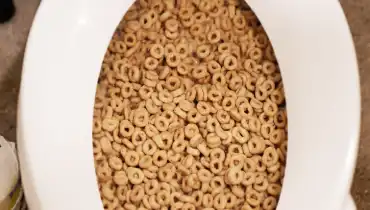Is it Wise to Flush Food Down the Toilet?
Is it Wise to Flush Food Down the Toilet?
Blog Article
Just how do you really feel about Flushing Food Down the Toilet??

Intro
Many individuals are typically faced with the issue of what to do with food waste, particularly when it comes to leftovers or scraps. One typical inquiry that emerges is whether it's fine to flush food down the bathroom. In this short article, we'll explore the reasons that individuals may consider flushing food, the effects of doing so, and alternative approaches for correct disposal.
Reasons people could think about flushing food
Lack of awareness
Some individuals may not know the potential injury brought on by flushing food down the commode. They might incorrectly believe that it's a harmless practice.
Convenience
Purging food down the bathroom may appear like a fast and easy option to taking care of undesirable scraps, specifically when there's no neighboring garbage can offered.
Idleness
In many cases, people might simply pick to flush food out of large idleness, without considering the repercussions of their actions.
Effects of flushing food down the toilet
Environmental effect
Food waste that winds up in rivers can contribute to contamination and harm marine ecosystems. In addition, the water made use of to purge food can stress water sources.
Pipes concerns
Purging food can bring about clogged pipes and drains, triggering pricey plumbing repair services and troubles.
Types of food that must not be purged
Coarse foods
Foods with fibrous appearances such as celery or corn husks can get entangled in pipelines and trigger clogs.
Starchy foods
Starchy foods like pasta and rice can soak up water and swell, resulting in blockages in pipes.
Oils and fats
Greasy foods like bacon or food preparation oils should never ever be purged down the commode as they can solidify and cause blockages.
Correct disposal approaches for food waste
Using a waste disposal unit
For homes geared up with waste disposal unit, food scraps can be ground up and purged with the plumbing system. However, not all foods appropriate for disposal in this manner.
Recycling
Specific food product packaging materials can be recycled, reducing waste and decreasing ecological impact.
Composting
Composting is an environment-friendly way to get rid of food waste. Organic materials can be composted and made use of to improve dirt for horticulture.
The significance of correct waste monitoring
Minimizing environmental harm
Proper waste monitoring practices, such as composting and recycling, aid reduce pollution and preserve natural resources for future generations.
Securing pipes systems
By avoiding the technique of flushing food down the commode, property owners can prevent pricey plumbing repair services and preserve the stability of their plumbing systems.
Conclusion
In conclusion, while it might be appealing to purge food down the commode for convenience, it is essential to recognize the possible repercussions of this action. By embracing correct waste administration practices and disposing of food waste responsibly, people can add to much healthier plumbing systems and a cleaner atmosphere for all.
FLUSH FOOD DOWN THE TOILET?
FLUSHING FOOD CAN CAUSE BLOCKED DRAINS IN YOUR HOME
All of the plumbing fixtures in your home are connected to the same sewer pipe outside of your home. This outdoor sewer pipe is responsible for transporting all the wastewater from your home to the Council sewer mains. Even small pieces of food that go down the kitchen sink can cause problems for your sewer. It should therefore be obvious that flushing larger bits of food, such as meat, risks a clog in either the toilet itself or the sewer pipes. Flushing greasy food is even more problematic because oil coagulates when it cools, coating the interior lining of your pipes.
THE TOILET IS NOT A BIN
Food isn’t the only thing that people shouldn’t be flushing down the toilet. People use the toilet to dispose of all kinds of things such as tampons, makeup wipes, dental floss, kitty litter and even underwear. Water goes to great lengths to educate residents about the high costs and stress placed on wastewater treatment systems simply from people flushing the wrong stuff down the toilet. It costs taxpayers millions of dollars each year, and homeowners thousands in blocked drain repairs.
FLUSHING FOOD IS A WASTE OF WATER
Flushing food is a waste of our most precious resource - water. In June this year Level 1 water restrictions were introduced to protect water supply from drought conditions. Much of New South Wales continues to be affected by prolonged drought with recent figures revealing up to 97 per cent of the state remains in drought. Depending on whether you have a single or dual flush toilet, every single flush uses between five and 11 litres of water. In the current climate this is a huge amount of water to be wasting on flushing food that should be placed in the bin (or better yet, the compost).
https://www.jabplumbingsolutions.com.au/blog/can-you-flush-food-down-the-toilet

I found that blog entry about Is it safe to flush food (especially rice) down the toilet? when surfing around the search engines. Enjoyed reading our blog entry? Please quickly share it. Help somebody else find it. We enjoy reading our article about Is it safe to flush food (especially rice) down the toilet?.
Visit Homepage Report this page